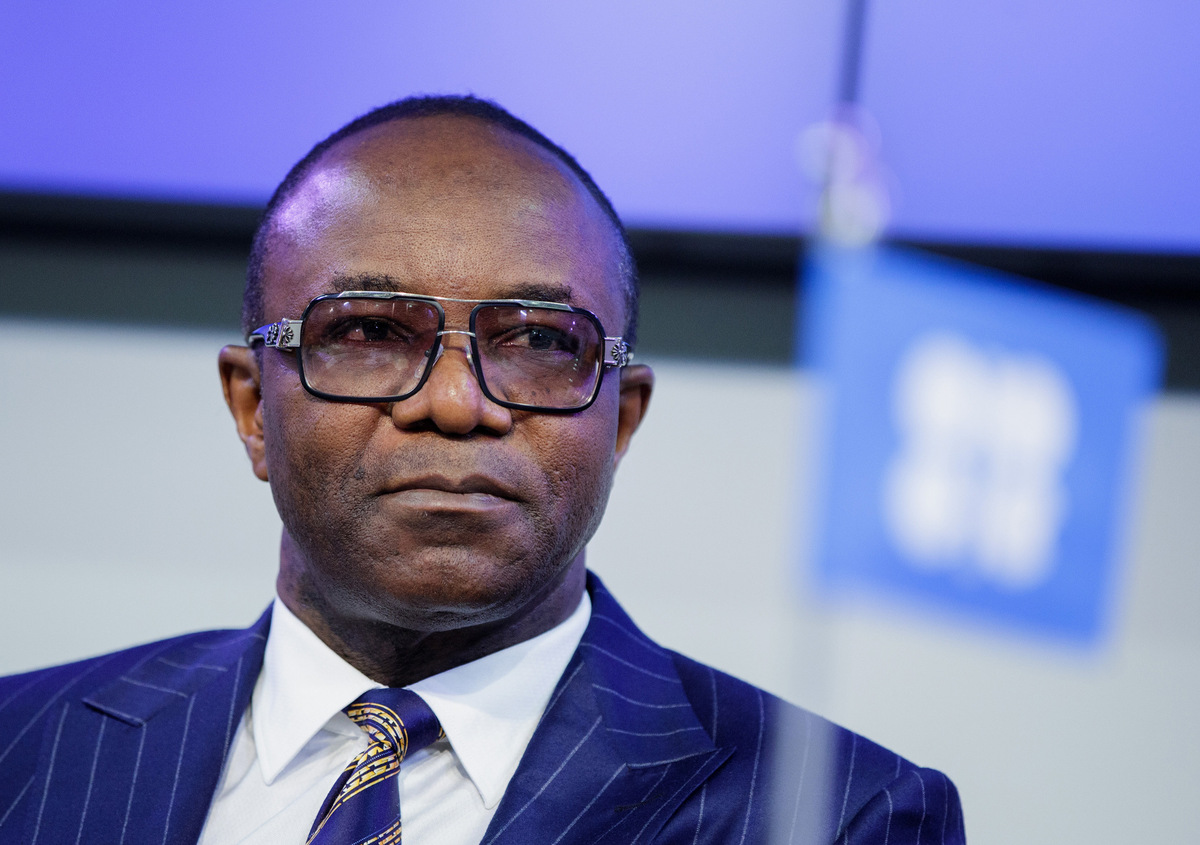Markets
Kachikwu’s Two Years of Impactful Reforms
Published
7 years agoon

- Kachikwu’s Two Years of Impactful Reforms
This month, Dr. Emmanuel Ibe Kachikwu will mark two years as the leading policy driver of Nigeria’s petroleum and gas industry under the leadership of President Muhammadu Buhari. He was first appointed Group Managing Director of the Nigerian National Petroleum Corporation (NNPC) by the President and eleven months later, Minister of State, Petroleum Resources was added to his portfolio. In July last year, Dr. Maikanti Baru was appointed GMD of NNPC. This allowed Kachikwu to focus squarely on policy formulation and coordination as Minister of State.
The last two years under Kachikwu’s watch easily qualify as one of the most reform focused periods in the history of the country’s oil and gas industry. He has led with vision and an infectious passion to make a difference. The minister has introduced innovative initiatives and set in motion groundbreaking changes in the sector. These initiatives are helping to manage the fallouts of turbulent global oil prices on the Nigerian economy as well as redefine and adjust the longstanding structures of the industry. They are also laying a stronger foundation for a more vibrant, more efficient and more profitable sector that can contribute sustainably to the national coffers.
A good place to start a review of his track record is the latest target which the minister has set: leading the country to achieve self-sufficiency in local refining capacity and end fuel importation in 2019. Like many of his moves, it has the audacious Kachikwu stamp.
The plan is to seek financing from reputable international oil companies to fund, rehabilitate and jointly operate the three refineries in Port Harcourt, Warri and Kaduna so as to boost them to optimal production capacity. According to a recent report from the NNPC, the refineries, installed to refine 440,0000 barrels of crude oil daily, worked at only 8.55% of their combined capacities from January 2015 to September 2016.
Kachikwu’s plan is to get the refineries to optimal capacity which if achieved would significantly reduce reliance on petroleum imports to meet domestic demand currently put at about 35million litres per day.
Another component of the plan is to support investors in Greenfield refinery projects. The biggest of these is the proposed Dangote refinery which is expected to provide an additional 650,000 barrels per day refining capacity by 2019. The combined refining capacity of the three government refineries at full capacity of 450,000 barrels per day and the Dangote refinery would put the country in the over one million per day category and will enable the country meet 100% of local demand.
This sounds like a tall order. But Kachikwu’s impressive track record of performance, personal credibility and the clear action plan that he has drawn up suggests that with the support of critical stakeholders in the industry, this task would be achievable.
Significantly, the minister has reported that several IOCs have indicated interest in supporting and financing the refinery revamp project. Dangote is on track to deliver on the refinery as scheduled. In spite of teething problems, things seem to be moving in the right direction.
One of the defining features of Kachikwu’s two years at the helm is that, with the support of the President, the minister has progressed the deregulation of the downstream sector which has reduced the cost of running the corporation by 30 percent and taken significant pressure off the country’s finances. It has also opened the sector to investment – local and international. Kachikwu has therefore succeeded in reducing the subsidy burden on the nation’s coffers and saved the country monies that are being re-directed to the financing of critical projects that will impact ordinary Nigerians and strengthen the economy.
As a result, queues have significantly disappeared from filling stations across the length and breadth of the country. “We are currently witnessing a period of calm and predictability in the petroleum industry not seen in the country in over two decades. The fuel queues have literally disappeared. Filling stations are always sufficiently supplied to meet demand” said Mr. Nantim M. Joseph, a public affairs analyst who resides in Abuja.
Kachikwu’s passionate and constant engagement with major stakeholders in the Niger Delta has also helped to foster peace and reduce militancy in the oil producing areas. A notable initiative in this regard was the meeting he organized in November 2016 between the Pan Niger Delta Forum (PANDEF) and the President, Muhammadu Buhari. At the meeting – which served the purpose of breaking the ice and building confidence – the group of elders from the region presented a 16-point list of things they wanted the federal government to address. He has been consistent in facilitating dialogue between key interest groups in the Niger Delta and the federal government to address areas of concerns. This has despite recurring incidents of pipeline vandalisms, significantly helped to increase oil production.
Kachikwu also reversed the opaqueness and outright secrecy which defined the operations of the industry for decades by introducing full transparency into the finances of the NNPC and the entire oil and gas sector. Months into his appointment as GMD of the Corporation, he started publishing full monthly operational accounts of NNPC. With this act, Kachikwu signaled a new era of openness and empowered Nigerians with knowledge about the workings of the industry that is the backbone of the nation’s commonwealth.
Another Kachikwu landmark: for the first time in thirty years, the country is executing a sustainable plan to tackle the perennial problem of inadequate financing for oil and gas operations. This was achieved by the elimination of the old cash call financing scheme. It will be recalled that the National Economic Council (NEC) had approved the proposal of the Petroleum Ministry for a new private sector-led funding regime for Joint Venture (JV) oil and gas operations in the country to be known as Unincorporated Joint Ventures (UJVs). The key objective of the scheme is speed up the development of the sector by allowing International Oil Companies (IOCs) to charge the cost for technical production before sending the net amount to the federation account.
This new funding regime is a huge positive for the growth of the local oil and gas industry. Unlike the previous one, it puts the private sector in the driving seat of financing oil and gas operations. The implication is that the government will no longer directly contribute to the JV projects. Rather its contribution will be funded by banks under an arrangement that will allow the banks to recover their monies; the federal government will only collect dividends from the profits. This will free-up the government from the annual budgetary cash call obligations and increase the funds available for budget financing.
Related to this is the successful negotiation and agreement with IOCs which will see the country reduce the accumulated Cash Call obligation of $6.8bn dollars to $5.1bn. Under the terms of this agreement with the oil majors, Nigeria is to pay Shell, ExxonMobil, Eni, Chevron and Total $5.1bn to cover arrears of exploration and production costs between 2010 and 2015. The balance is to be paid within five years at zero interest from incremental volumes not current volumes.
The net effect of this deal for Nigeria is about $7 – $8bn in savings over 5 years. About $15 billion fresh investment is expected to flow into the country as a result of this measure and will help to reduce the cost of oil production from about $27 to $18 per barrel thereby increasing government revenues. The deal which is to be finalized before the end of the year will bring to an end the protracted dispute over the arrears between the country and the oil majors and create a conducive environment for greater foreign investment in the sector.
Another significant milestone of the past two years is the $15 billion cash-raising oil deal with India to raise foreign exchange to meet the shortfall in national revenues. The Indian government, one of the world’s top crude oil buyers, will upon completion of the deal make upfront payment for future crude oil purchases. This is to be repaid on the basis of firm term crude contracts over some years and in consideration for Indian companies collaborating in the refining sector as well as exploration and production activities on a government-to-government basis.
No doubt, Kachikwu has focused strongly on establishing a structured and sustainable financing scheme to enable the downstream sector to adequately fund itself without putting pressure on the federal purse. It was also to this end that the minister, during an investor roadshow in China, signed Memorandums of Understanding (MoUs) with several Chinese firms totaling over $80 billion in new investments that will span over five years. The deal will cover pipelines, refineries, gas and power, facility refurbishments and upstream financing to bridge the infrastructure funding gaps in the Nigerian oil and gas sector.
Also key are the secured commitments from Sinopec and China National Offshore Oil Corporation (CNOOC) to commit to further investments in Nigeria’s upstream oil sub-sector to the tune of $20 billion. These unprecedented financing deals would cumulatively bring the total amount of prospective investments by Chinese firms over a five-year period to over $100 billion.
The clear progress made possible by Kachikwu’s reforms gives hope that a modern efficient and profitable petroleum industry is possible. His strong track record in the industry, vibrant leadership and “can do” spirit have delivered measurable benefits to the economy and taken the sector many notches higher. He is indeed the game changer.
Is the CEO and Founder of Investors King Limited. He is a seasoned foreign exchange research analyst and a published author on Yahoo Finance, Business Insider, Nasdaq, Entrepreneur.com, Investorplace, and other prominent platforms. With over two decades of experience in global financial markets, Olukoya is well-recognized in the industry.

You may like
-


Zhongshang Fucheng Moves to Auction Nigerian Properties in UK Following $70M Arbitration Award
-


Nigerians and Indians Lead UK Job Market Growth Amid Post-Brexit Migration Shifts
-


Violent Protests Erupt Across Nigeria, Leaving Six Dead and Many Injured
-


Nigerian President Tinubu Condemns Protest Plans Over Economic Woes
-


Nigeria to Suspend Import Levies on Food Crops to Ease Inflation Pressure
-


Nigeria Leads Africa in Private Equity Deals, Records $2.59 Billion in Q1 2024








